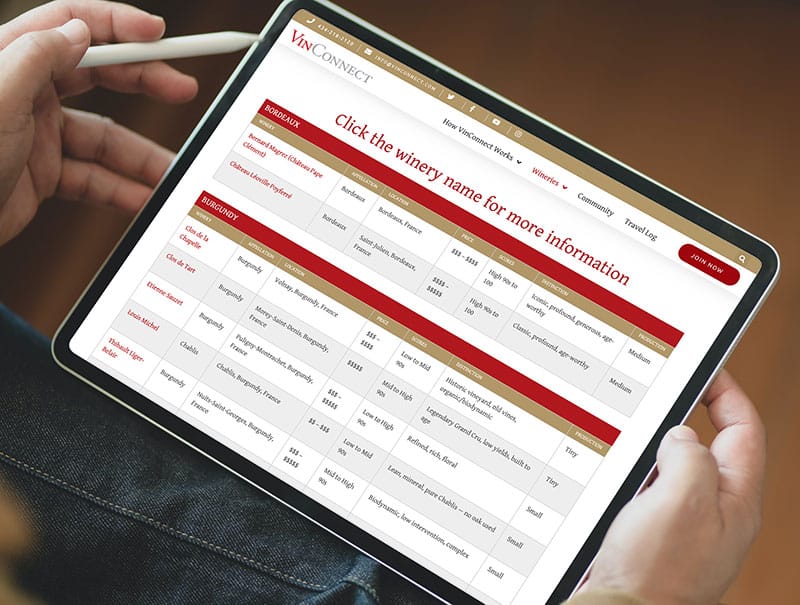It had been a few years since I had done wine visits in Germany. Despite traveling to Dusseldorf each spring for the annual wine trade fair ProWein, I had not had a chance to visit our partners or other individual estates since prior to Covid. With several new German winery partners added since that time, I knew I needed to return to Germany to sit down with our recent additions and revisit old friends. This was a small trip — just myself and one customer — so we were able to travel nimbly and cover a lot of ground in just four days of visits. As you will read we did a deep dive into the Mosel (Germany’s largest and most well-know region), as well as hitting top producers in several other notable wine growing areas, which made for interesting comparisons in soils, geography, and winemaking styles.
Monday
Monday our arrival day was a national holiday in Germany, so after landing our only objective was to corral our car and make the short drive out to the Rheingau. Our hotel Burg Schwartzenstein was fantastic, but located in a small town without many options for lunch. I considered myself lucky to have found a quaint nearby coffee shop Caffeehaus Moser that was packed with folks enjoying the day and lingering over their plates and cups. Only after sitting down did I realize, however, that the only food options were desserts! Not that Black Forest Torte and tea are the worst things for lunch, but by the time dinner came around I was sure to be starving.
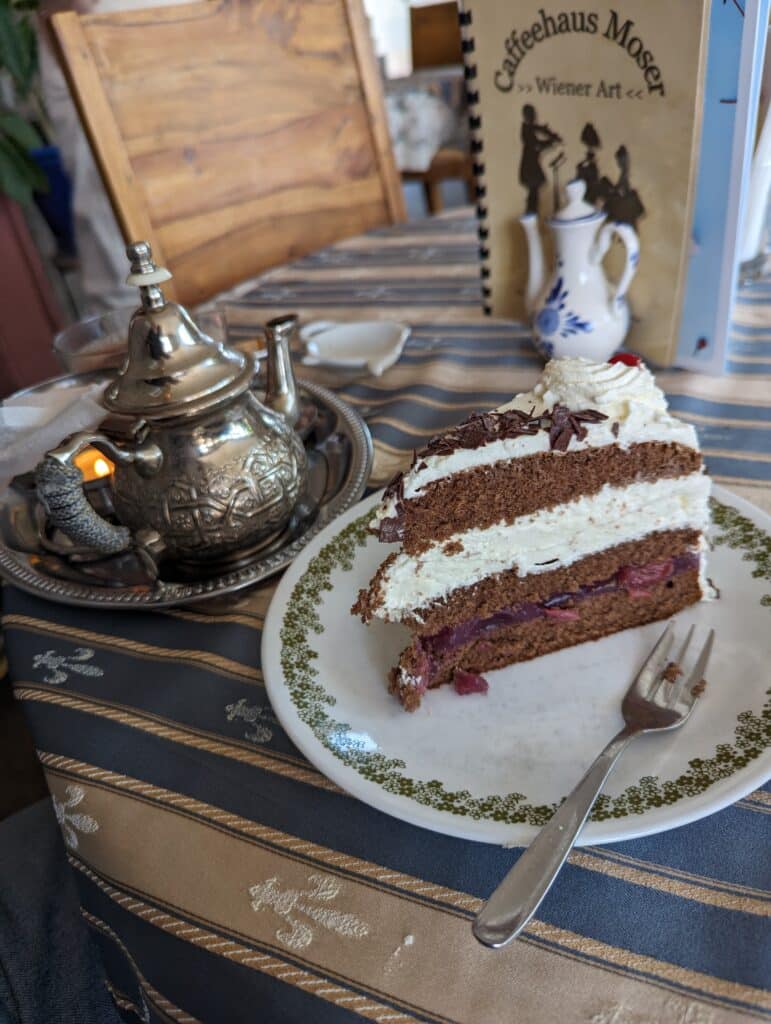
Burg Schwartzenstein has two renowned restaurants that share exceptional views of the river and the same amazing wine cellar. Its formal white tablecloth restaurant is closed on Mondays, but the more casual option we visited was fantastic. Sitting on their outdoor patio overlooking the river we enjoyed some fabulous food and great wine — a great way to beat the jet lag and kick off a busy week.
Tuesday
Schloss Johannisberg (website) — this renowned, historic estate just down the street from our hotel is where wine touring formally began. Winemaking here dates back more than 1000 years, when monks tended Riesling vines on a hill overlooking the Rhine. We were able to tour the cellars built under the palace that replaced the abbey in the 18th century, and then migrated to the tasting room where we enjoyed several selections of both dry and sweet wines. This is a fantastic visit, and highly recommended if you are ever touring the Rheingau.
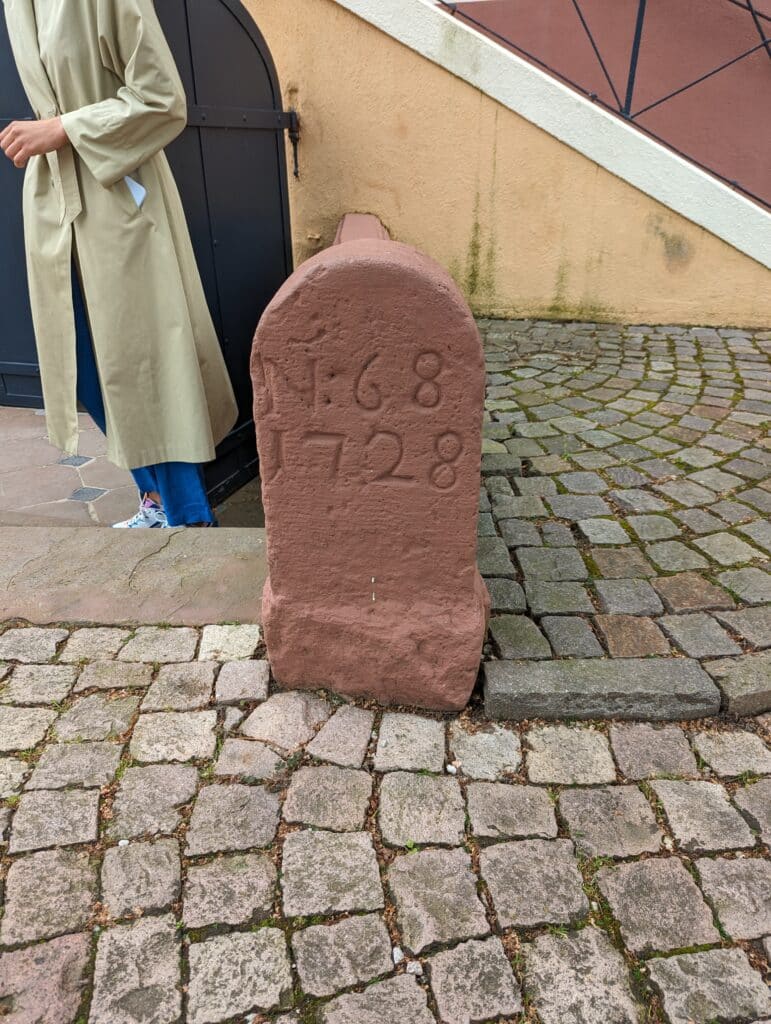
For lunch we found a spot at the nearby Winzerhaus Johannisberg, in the quest for our first schnitzel of the trip. Not only were we successful in finding schnitzel, we were also introduced to a particular German delicacy — white asparagus, or in German, “spargel.” We didn’t realize that it was high season for spargel, and nearly every restaurant we went to for the rest of the week had a full spargel menu featuring the local produce.
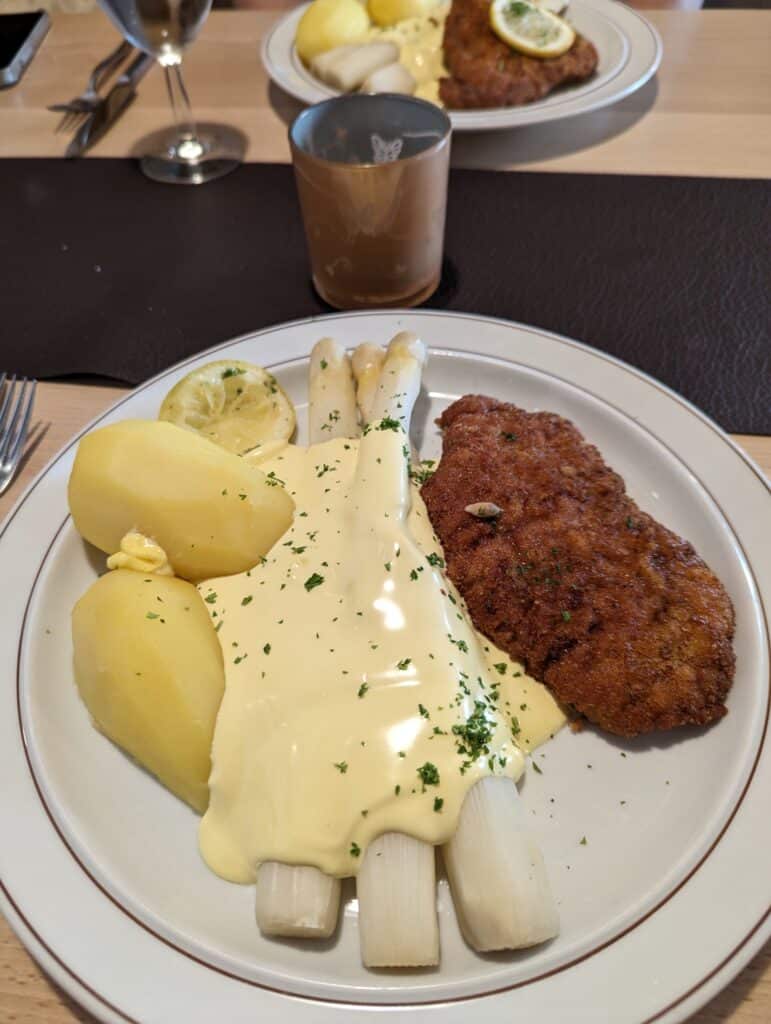
Leitz (website) — Josei Leitz is such a character that it is always a pleasure to spend time with him. There have been many recent changes and evolutions at the estate, with a new expansion of the winery and a more formalized hospitality center being the most recent updates. Opened just a week prior to our arrival, the tasting room slash events space was brilliantly done, and the estate will now work to raise its profile locally and with travel providers to make sure it becomes a popular destination for visitors’ wine tours and tastings. Josei’s son Johannes also gave us a tour of the Rüdesheimer Berg—a steep, south-facing hillside of extremely old slate and quartzite that encompasses the Grand Crus of Schlossberg, Rottland, and Roseneck that make up the pinnacle of Leitz’s production.
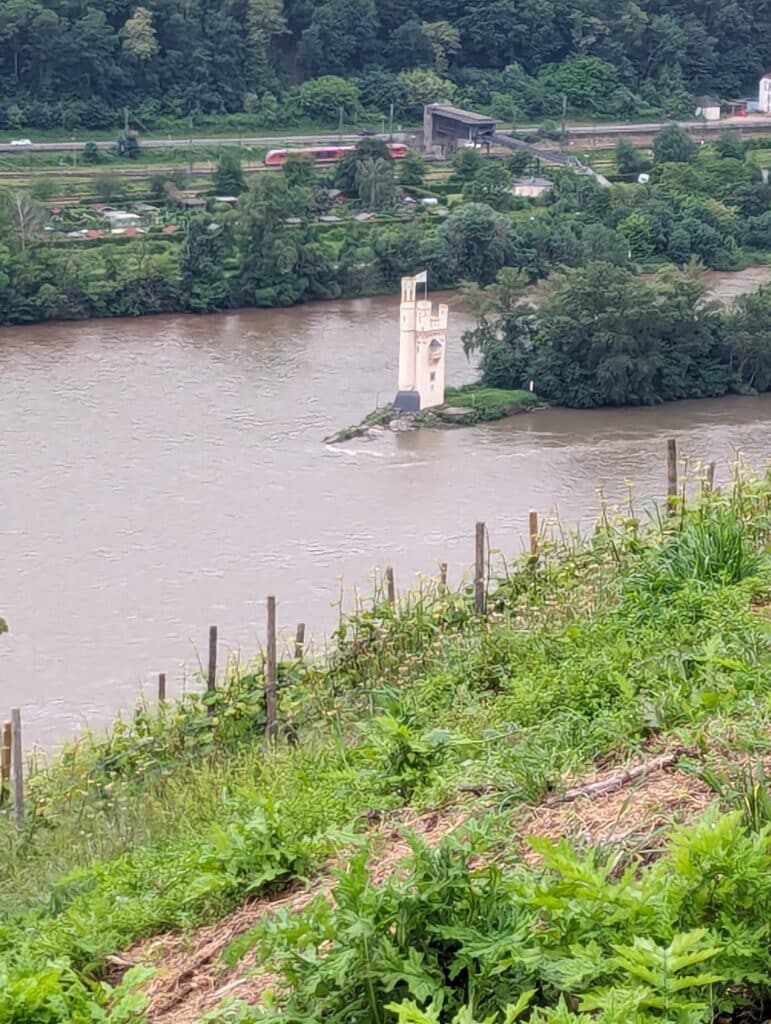
Robert Weil (website) — Julius Paetzold the U.S. export manager gave us a lovely tour of this historic winery and led us through a long tasting in their newly revamped hospitality area. We tasted a dozen wines from dry to sweet, and all showed the precision and refinement I associate with Weil’s wines. the Grafenberg GG Trocken 2021 was my favorite of the lineup, not surprising given the esteemed terroir and a return to a more historically normal (cooler) growing season.
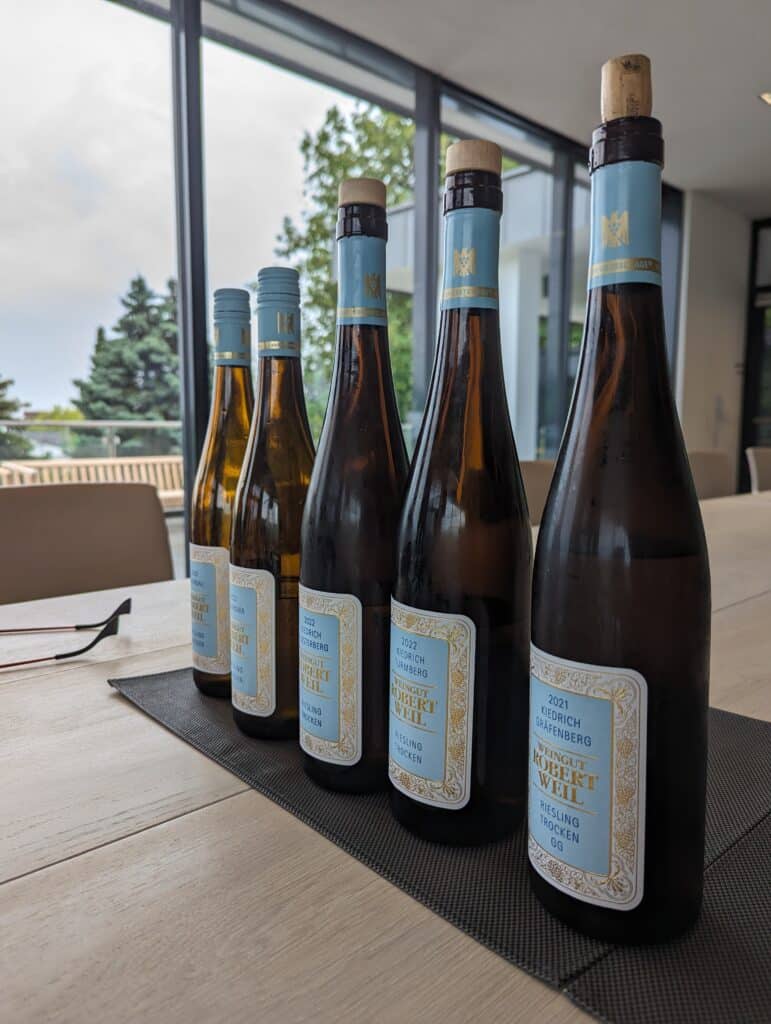
For dinner we headed to the renowned Zeltinger Hof in the village of Zeltingen. This hotel and restaurant is legendary for its traditional accommodations, authentic old-school German cuisine, and massive wine list. With more than 100 German producers represented, and reasonably-priced bottlings back to the 1970s and beyond, it was a thrill to experience. We ended up selecting an Auslese from the incredible 1971 vintage from Cristoffel-Prum (now SA Prum), the family with whom we were staying (and would be visiting on Thursday). While certainly late in its life, there was still some fruit and vitality left in this wine, and it was thrilling to drink something of that age that had been perfectly cellared all these years.
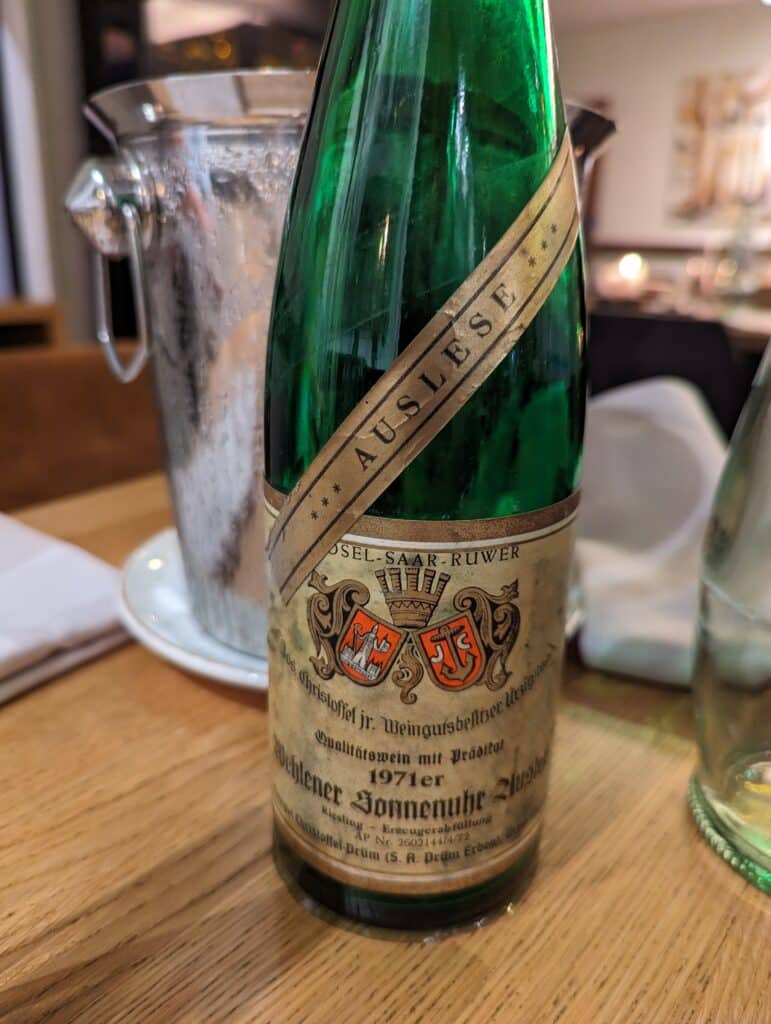
Wednesday
Markus Molitor (website) — We met here with export manager Daniel Kiowski, who suggested we first take a quick tour of some of their vineyards. Soon we found ourselves among the vines in the famed Ürziger Würtzgarten, where they cultivate some of the steepest slopes in the world. After a harrowing drive up a tiny dirt lane, we were treated to spectacular views of the Mosel. Afterward we retired to their spacious tasting room, where we sampled more than a dozen wines from among the nearly 100 selections they bottle each year. These wines are incredibly precise and transparent, and at the highest levels (the bottlings marked with *, ** or ***) as impressive as any we tasted. Very highly recommended!
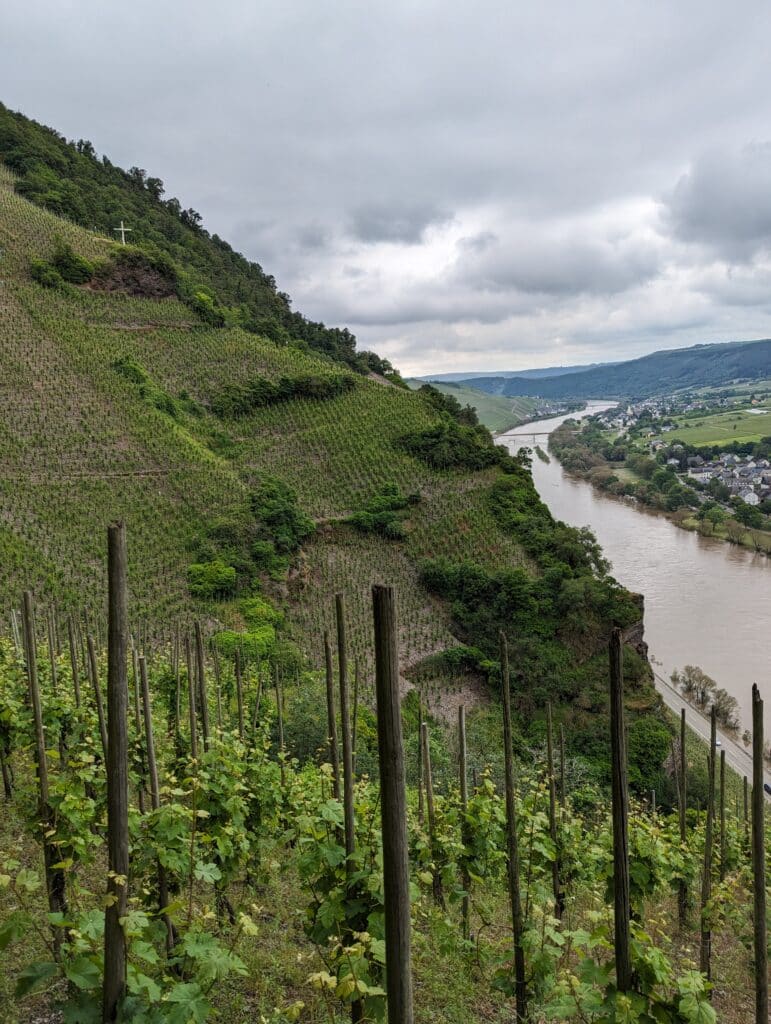
Dr. Loosen (website) — Our next stop was Dr. Loosen, where we were thrilled to spend a couple of hours with the peripatetic Erni Loosen himself. Erni is a ball of energy and a constant stream of conversation, ideas, and information. Rather than tasting their mainstream wines, Erni shared with us examples of his many and various new projects, which include his first German Pinot Noir, a few aged selections from his upcoming line of Tradition bottlings, some whites and reds he is now making in Burgundy, and finally a sample of a secret new project of Ürziger Würtzgarten grapes that have been in barrel for more than 10 years! The hospitality here is fantastic, and this is a can’t-miss visit for those touring the middle Mosel.
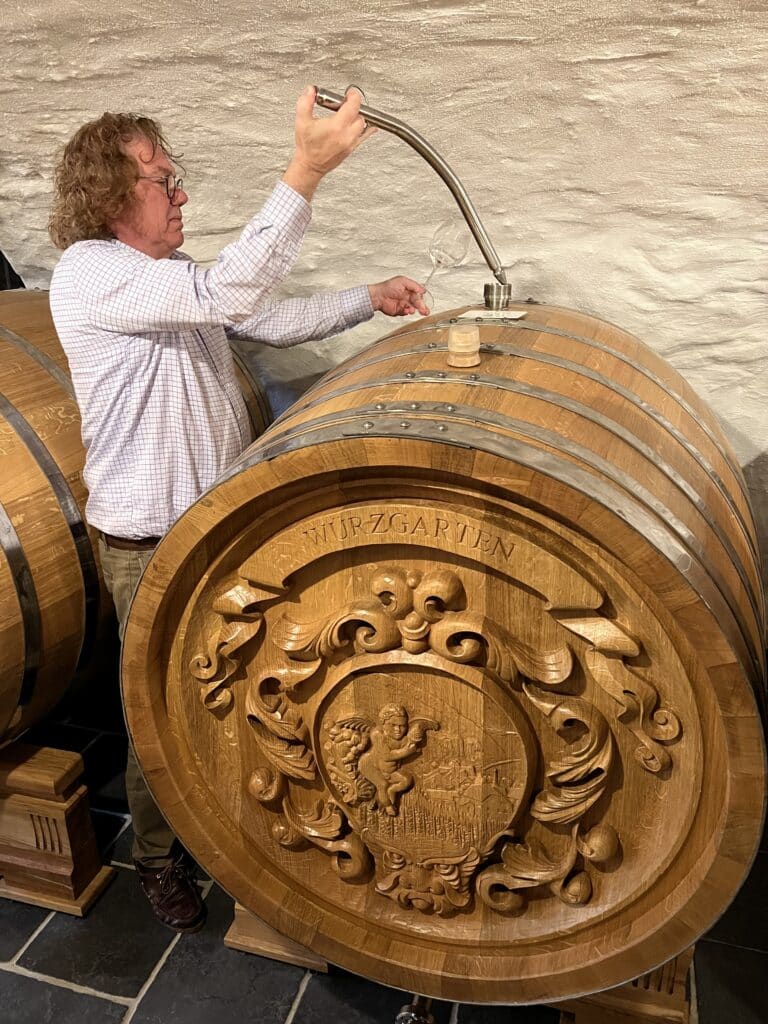
Between visits we popped into the quaint nearby village of Bernkastel, where we briefly wandered around before finding a spot to grab a quick sandwich. I can definitely see why this is a popular stop for anyone visiting the middle Mosel. If we had more time it would definitely merit a thorough investigation.
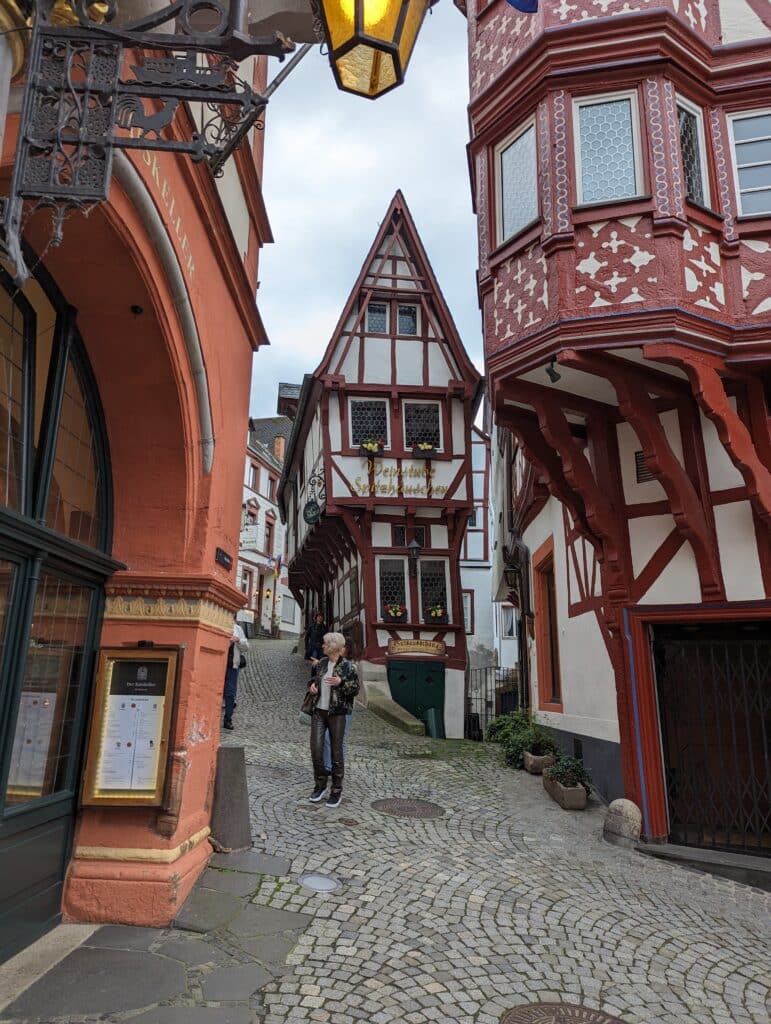
Günther Steinmetz (website) — Our next stop is an estate I have been tracking for some time. Stefan Steinmetz and his wife Sammie have quietly been producing some of the most distinctive and profound wines in the Mosel, and it was a great pleasure to meet them for a leisurely tasting and chat around the kitchen table at their estate. These are incredibly delicious and artisanal wines that I expect you will be seeing and hearing more about in the years to come — I encourage you to seek them out now before they become more widely discovered!
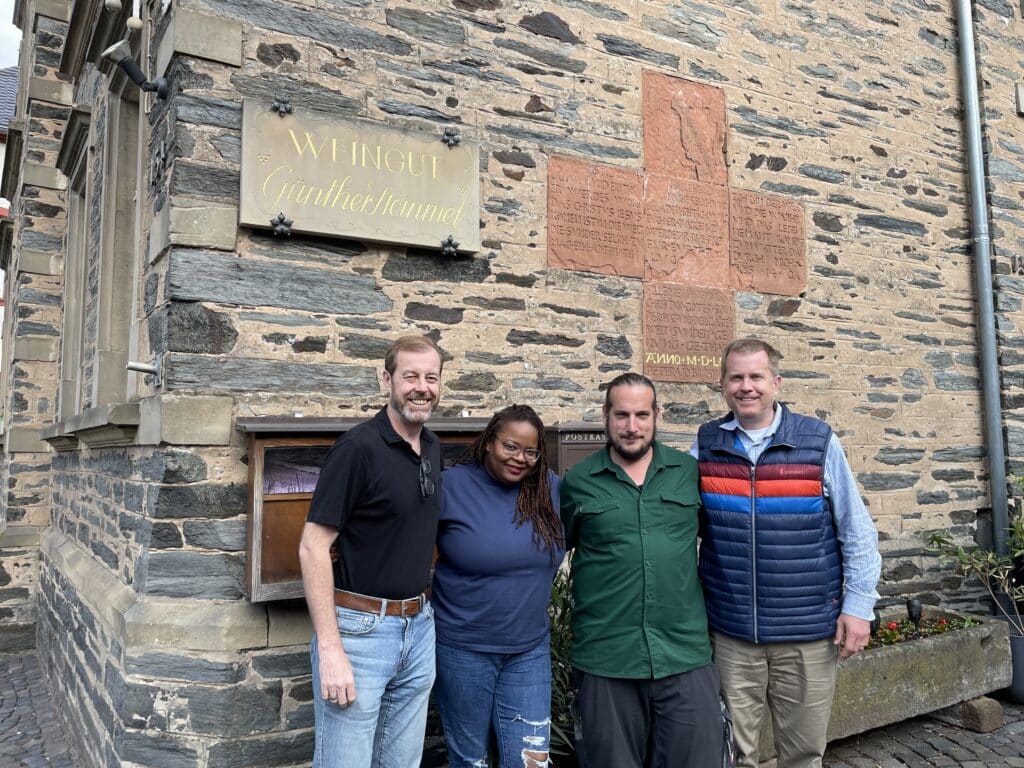
After a long day of tasting and driving we headed to dinner at Die Mosel, a great wine bar set right along the Mosel river in the village of Traben. Here we enjoyed a delicious bottle of Markus Molitor Zeltlinger Sonnenhur Spatlese 2004 white capsule (trocken) that was beautifully mature and complex, as we watched the dog-walkers, bikers and runners along the river while the sun set in the background. Magical!
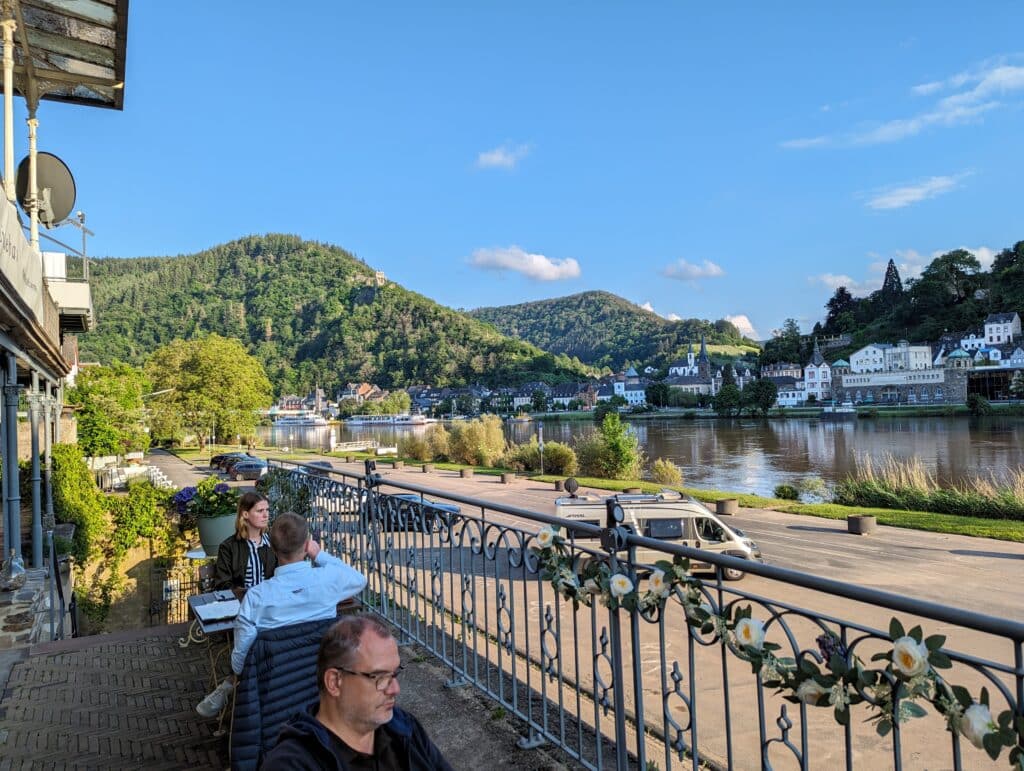
Thursday
SA Prum (website) — Having stayed here the past two evenings, we were able to begin Thursday by wandering from the breakfast room over to the tasting room across the courtyard. Here we had the great pleasure of visiting and tasting with Raimund, his wife Pirjo, and daughter Saskia, who now is in charge of the estate. That shared more than a dozen wines, from dry to sweet, and recent releases to bottles up to 20 years old. These wines are classically made and built for aging, as the traditionally styled labels suggest. With excellent wines and fantastic hospitality, this is definitely a place to consider staying should you plan to visit the Mosel!
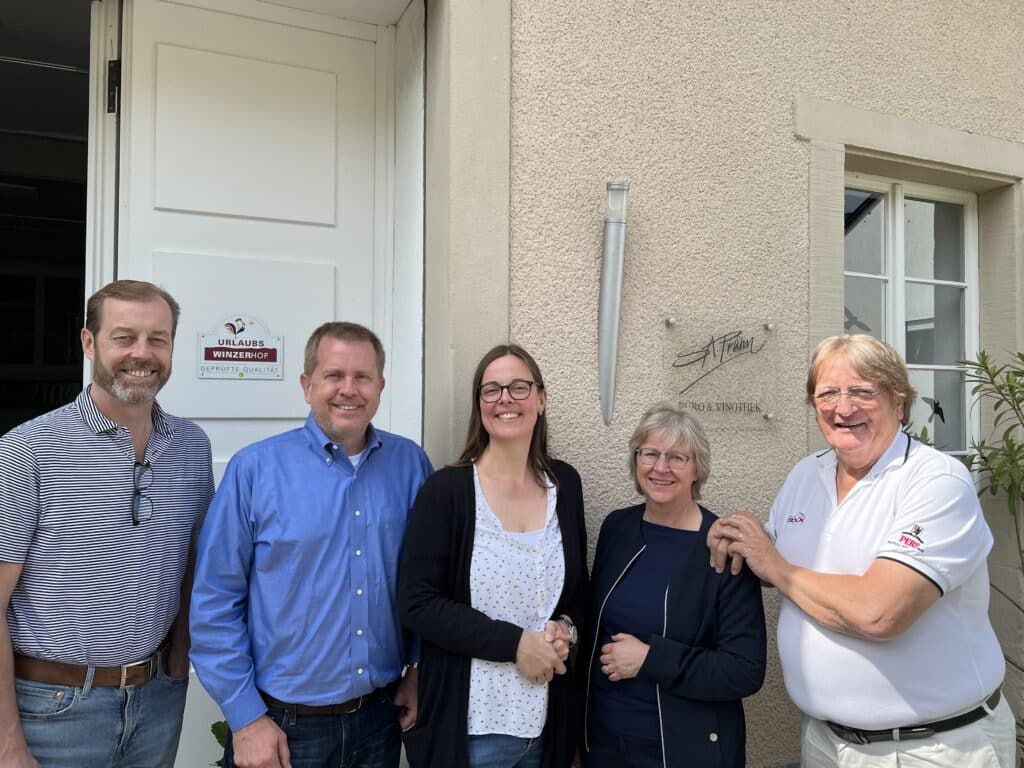
With our tastings in the Mosel complete, we jumped back in the car to head onward south to other nearby regions of the Ruwer and Saar valleys. We made a brief stop in Mertesdorf at Hotel Weis for a quick lunch before our next tasting, where we once again indulged in spargel.
Maximin Grunhaus (website) — Conveniently located just across the street, we were thrilled to once again visit our friends at Maximin Grunhaus. This estate is so special, with its Grosse Lage (Grand Cru) monopole vineyards adjacent to the cellar, a dramatic difference from the Mosel Valley where (like Burgundy and Barolo) multiple estates own vines in the same vineyards. In recent years they have added a tasting room and wine shop, along with a formal hospitality operation, which was great to see their wines getting more visibility. We tasted more than a dozen wines; beyond their always delicious Rieslings, they have expanded production to include some excellent Pinot Blanc, their first Pinot Noir, and a bit of sparkling Riesling as well.
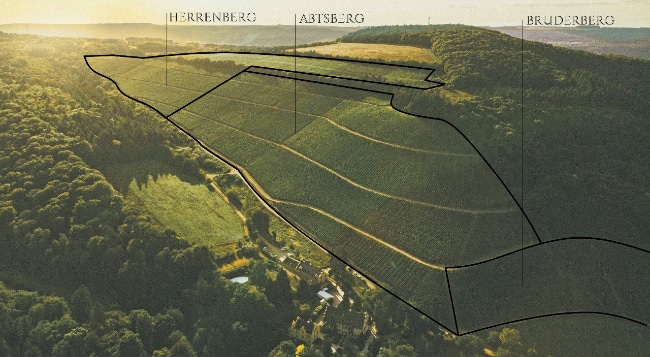
Cantzheim (website) — Our one stop in the Saar was at a new estate that has been garnering lots of high praise. Proprietor Anna Reimann was formerly export manager for Markus Molitor, before deciding to found her own estate and start producing her own wines. They have met with rapid and wide acclaim, and tasting through the full lineup it’s easy to see why — she uses a lot of skin maceration to give her wines depth and richness, while retaining their individuality and expressiveness. Distribution is still somewhat limited in the U.S., but these are wines to be searching out.
For dinner we drove into Trier, the oldest city in Germany and the site of some very famous ancient Roman ruins. We dined at the aptly named Das Weinhaus, a combination wine bar and more traditional restaurant that share a fantastic cellar. Their excellent food and great list was matched by a lively vibe, which was more than we could say for the rest of Trier, which stuck us as sleepy if not outright boring.
Friday
After three solid days of wine tasting, driving, and spargel overload, we took some time Friday morning to sleep in, catch up on work, and grab a late breakfast.
Donnhoff (website) — After a drive to the Nahe down some narrow valley roads, I was thrilled to make this much-anticipated visit. This legendary estate put the Nahe on the map decades ago with their spectacular and age-worthy wines, and I was excited for my first visit to learn more. We were joined in our tasting by two Dutch wine collectors with large cellars of Donnhoff, so the winery was encouraged to open some pretty special bottles for our visit. After tasting through a range of the new 2023 vintage wines, they were generous enough to share several older bottlings, and wow — those really shined. Two GG (trocken) bottlings from 2016 and 2014 were the standouts for me, and showed just how much these wines can evolve and develop more depth and complexity with even moderate aging.
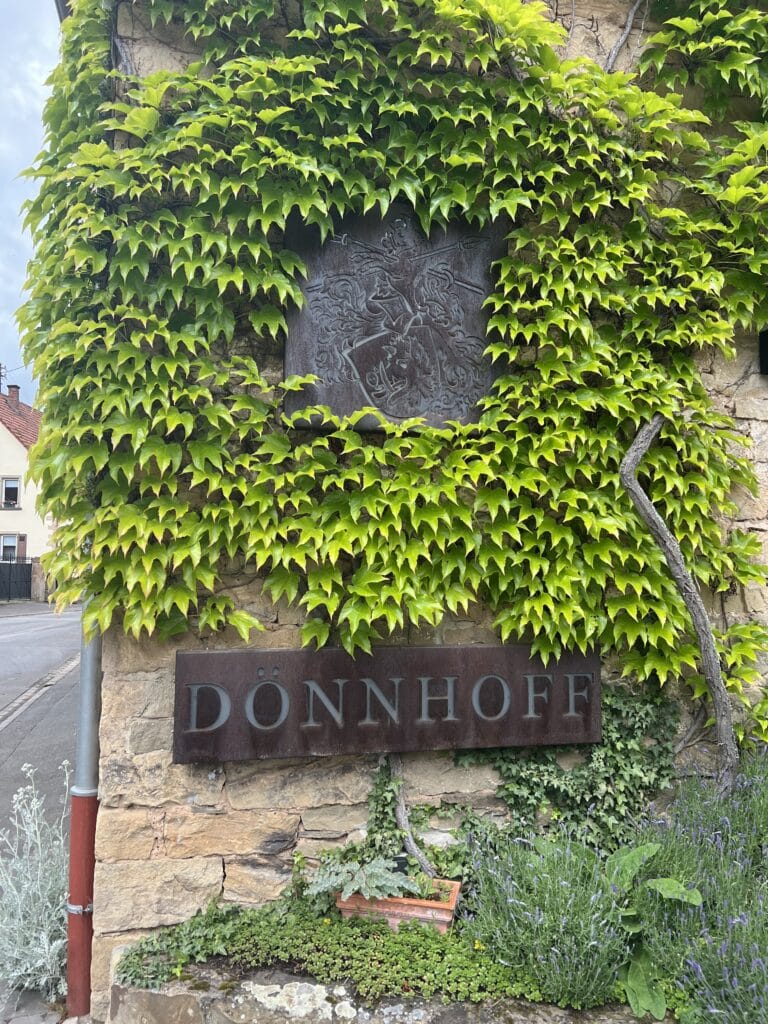
Wittmann (website) — Perhaps my favorite estate in all of Germany, we drove over to the Rheinhessen for our final visit of the trip. A centuries-old estate now managed by the younger next generation, the wines shine for me with their precise fruit, intense concentration, and prominent minerality. It was a thrill to taste the new 2023 vintage of one of my all-time favorite wines, their Morstein GG, and for the first time taste its tiny neighbor the Bruenhessen GG, as well as some more GGs and a range of other wines. Once again I am summarily impressed and reminding myself I need more of these in my cellar.
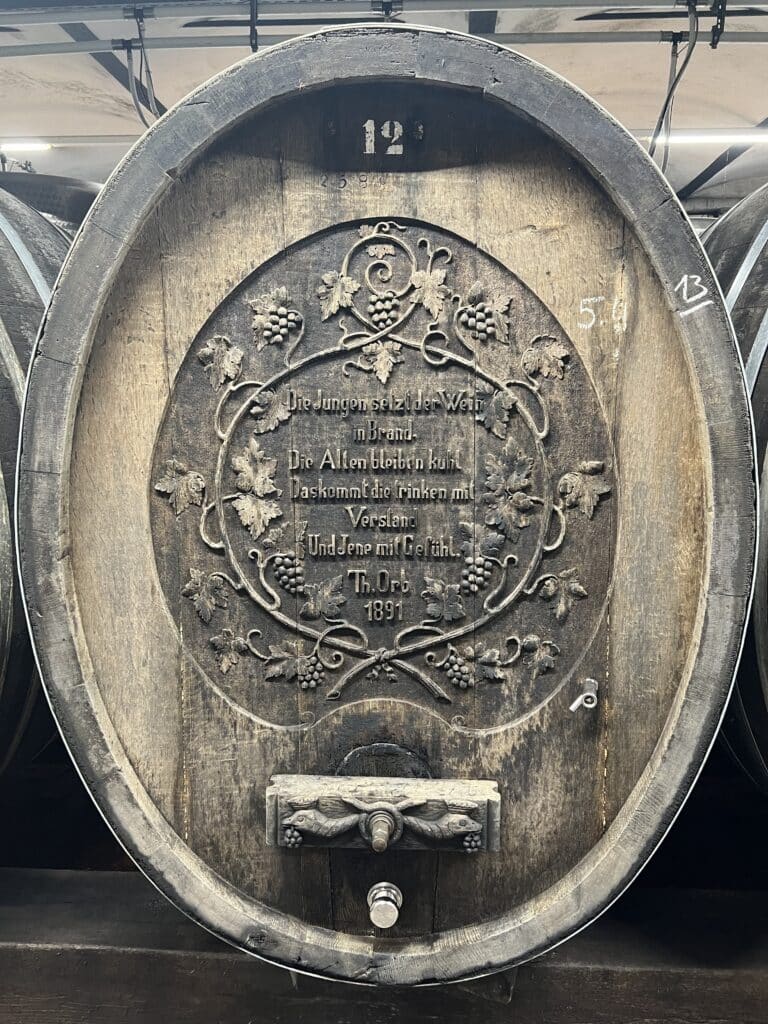
From there it was off to Heidelberg, a nearby college town with lots of history and a lively city center, to wrap up our trip. For dinner we ventured to Chambao to enjoy its interesting, contemporary, fusion cuisine. With great food, an excellent wine list, lively vibe, and great location right along the river, it was the perfect place to relax and enjoy a lovely Friday evening. After dinner we wandered the lively village center, where all sorts of restaurants, bars and clubs were bustling with crowds, music, and energy. What a fun city!
Saturday
After four full days of vineyard hiking, wine tasting, and driving, we decided to take go easy on our last day and investigate Heidelberg. The morning began with a lazy breakfast, and then a hike up to the famous Castle Heidelberg. We wandered around the grounds, poked around a bit inside, and enjoyed the lovely views of the river and city below. The castle has grown and evolved over centuries, and it was fun and interesting to see how the architecture and construction have changed with time.
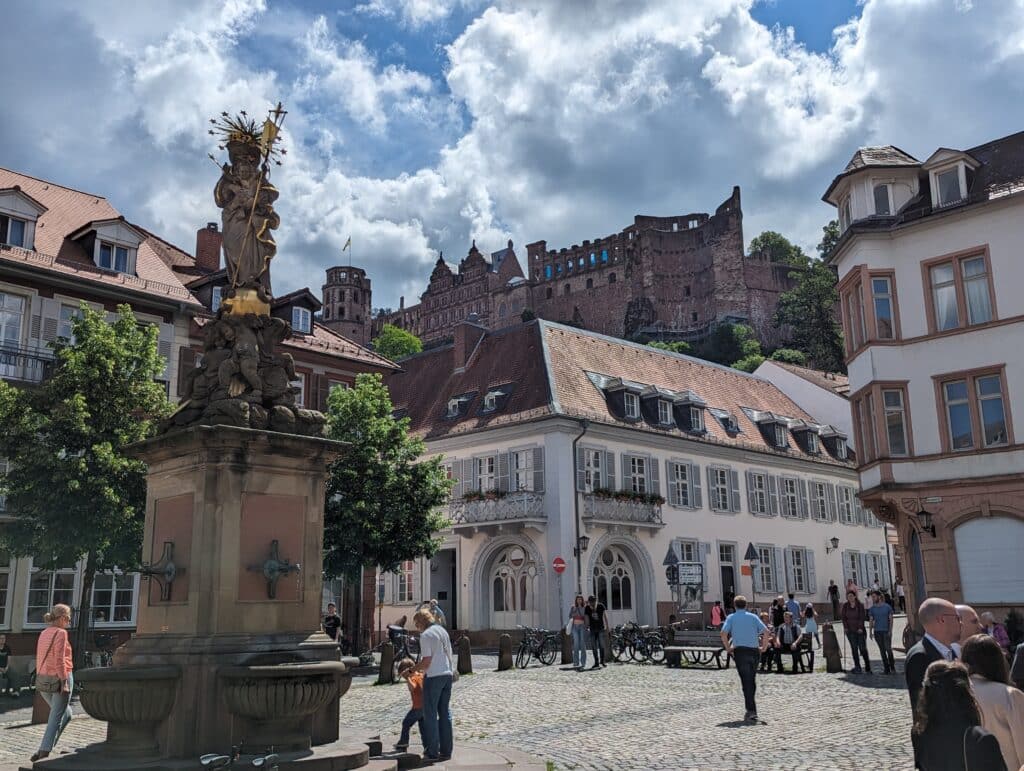
After working up our appetite, we decided on a traditional German beer hall lunch at Vetter’s Brauhas in the old part of Heidelberg. This is traditional German beer hall cuisine at its finest — plenty of sausages, sauerkraut, mustard, and a welcome beer to wash it all down!
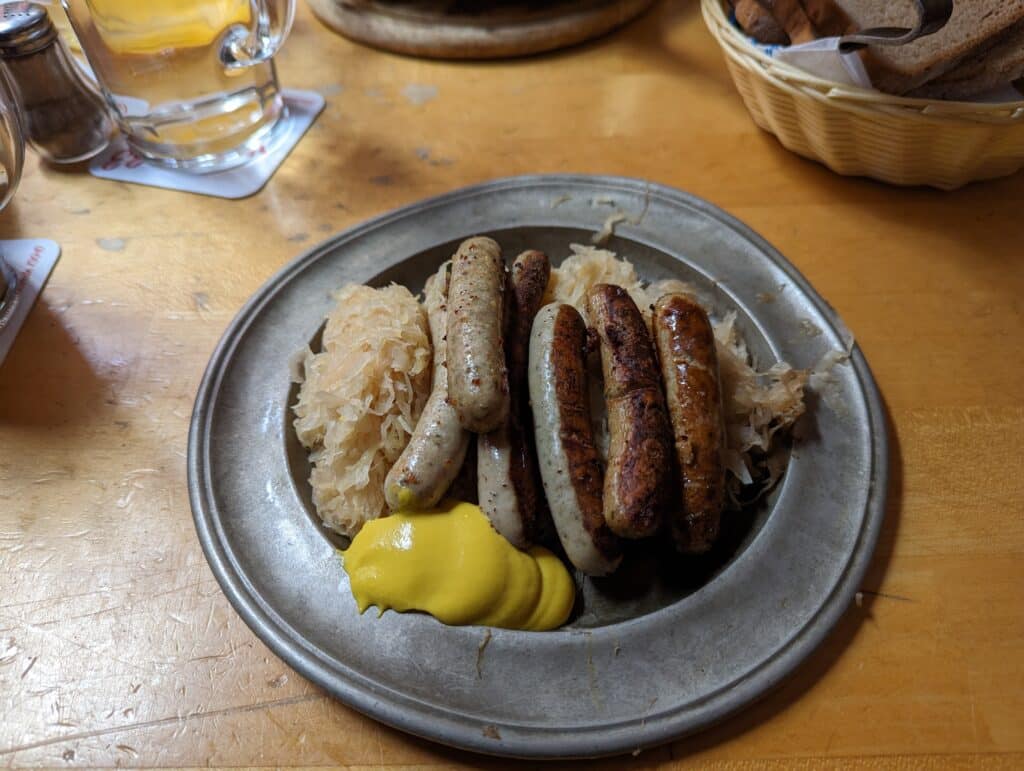
Sufficiently fueled up, we crossed the Neckar River and climbed up to trek Heidelberg’s famed Philosopher’s Walk. Here it is said the great German philosophers like Georg Hegel would wander the path, look at the Castle across the river, and contemplate the nature of existence. While it certainly was a beautiful day and a gorgeous view, it didn’t seem to inspire in me any new insights into the meaning of life.
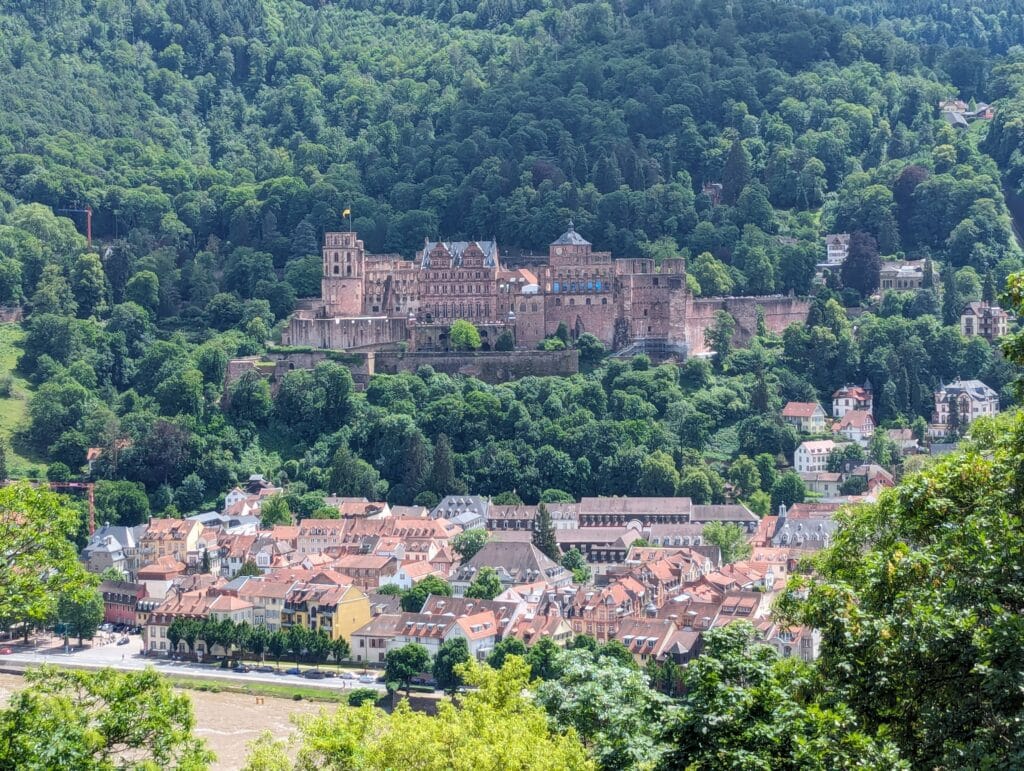
For our final dinner we selected the nearby restaurant 959, where we ate outdoors to enjoy the lovely evening weather. They were kind enough to let us bring and enjoy an amazing bottle of one of Günther Steimetz’s top Pinot Noirs alongside an amazing bottle of aged Ponsot white Burgundy we purchased from their deep and well-priced list. Paired with some amazing dishes, the entire evening could not have been a more enjoyable way to wrap up a week of fantastic visits, amazing wines, and delicious food.
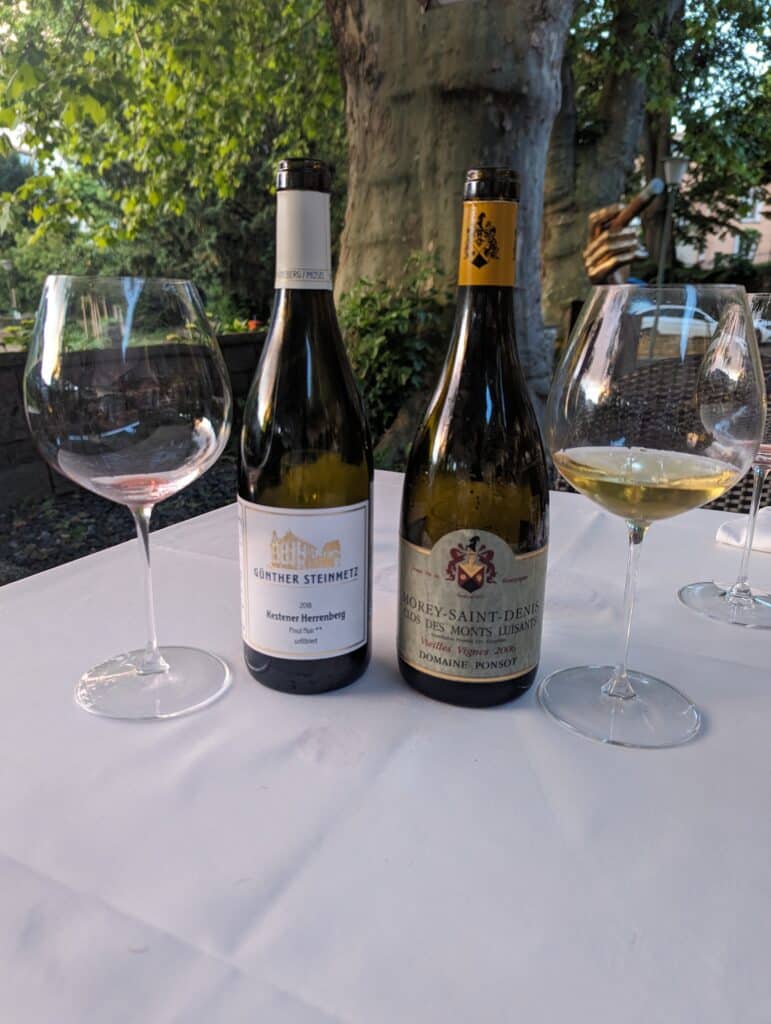
Germany’s wine regions (and particularly the middle Mosel) combine incredible geographic beauty with fantastic winemaking and outstanding hospitality. For anyone serious about wine appreciation (or particularly interested in Riesling), I encourage you to visit to see and enjoy it all for yourself. I hope to make the time to get back again soon to share it all with friends and family.
